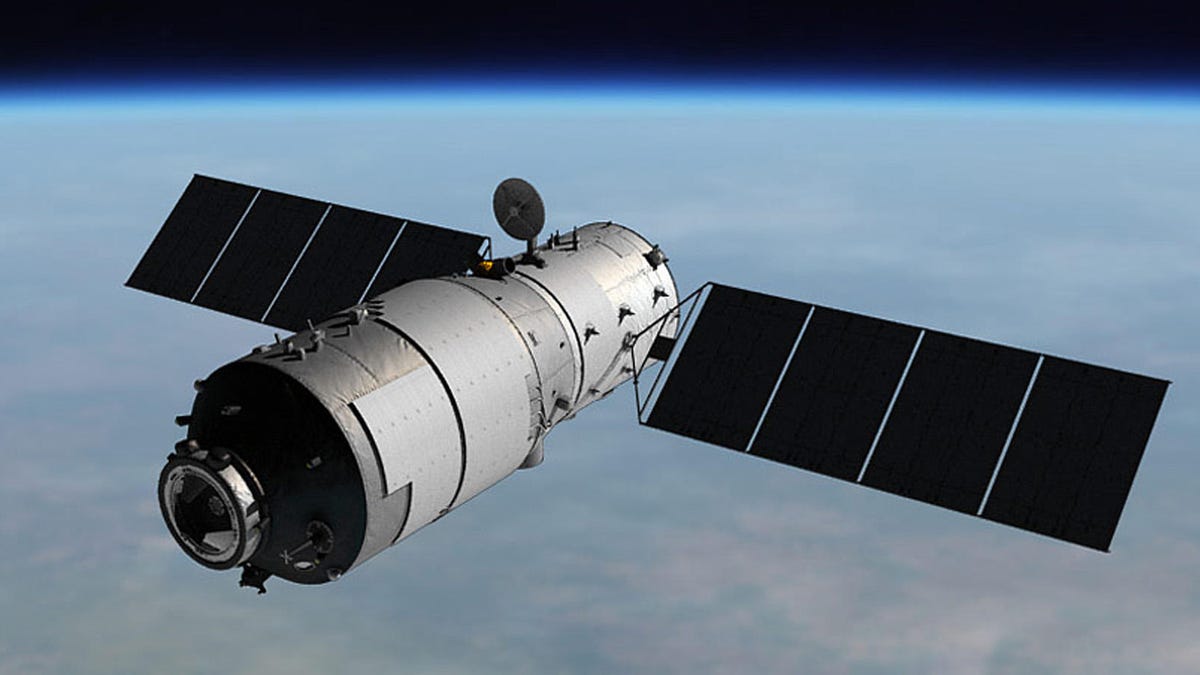Crashing Tiangong-1 space station just misses space graveyard
China's so-called Heavenly Palace has finally fallen from the heavens, but it isn't clear anyone saw it.

Tiangong-1 is no more.
China's out-of-control Tiangong-1 space station is no more, or at least it is no longer what it once was. Whatever bits of the spacecraft didn't burn up on its long descent through the atmosphere are now likely headed to their final resting place on the floor of the south Pacific.
The Joint Space Operations Center at Vandenberg Air Force Base in California reports that Tiangong-1 re-entered Earth's atmosphere over the ocean near Tahiti at approximately 5:16 p.m. PT on Sunday.
As astronomer Jonathan McDowell pointed out on Twitter, Tiangong-1 just missed the south Pacific's "spacecraft cemetery," an area where a number of other spacecraft have been steered to their final resting place, including the Russian Mir space station.
NW of Tahiti - it managed to miss the 'spacecraft graveyard' which is further south! pic.twitter.com/Sj4e42O7Dc
— Jonathan McDowell (@planet4589) April 2, 2018
The Chinese Manned Space agency also confirmed the re-entry of its Heavenly palace at roughly the same time and place.
Tiangong-1 was originally launched in 2011. The plan was for a controlled re-entry back into the atmosphere and a safe break-up far from any human habitation at the end of its life. But back in 2016 word began to circulate that Chinese mission command had lost contact and control of the empty space station.
In the end, it didn't much matter that the spacecraft apparently came back down in an uncontrolled manner as it landed not far from where hundreds of others have ended up via controlled re-entries.
So it turns out there was little reason for concern. Or as McDowell put it: "The Pacific Ocean is big. Always bet on the Pacific."
Tech Enabled: CNET chronicles tech's role in providing new kinds of accessibility.
Logging Out: Welcome to the crossroads of online life and the afterlife.

